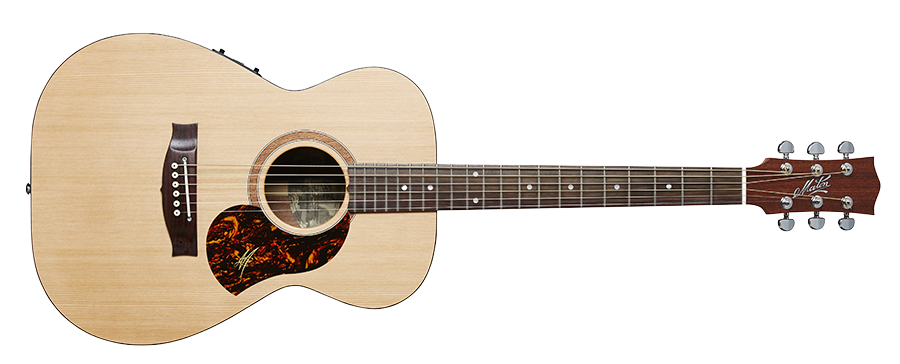
Could we unlock the tonal potential of this fantastic little guitar? As with the recent improvements to our Messiah and Australian models the genesis of this project is to be found in the Maton Custom Shop.
With the advent of the “Traditional” series in the Maton Custom Shop we came to a new understanding of what a smaller bodied guitar is capable of in terms of tone and projection. The Traditional is slightly larger than the 808 in area but also slightly thinner so the volume of air in both guitars is fairly similar. We found that as the Traditional developed and as Andy Allen (Custom Shop luthier) kept refining the tone of the model it was leaving the 808 (and our ideas of a small bodied guitar) further and further behind.
We still felt however, that there was more to be had from the Traditional, especially in the area of lower mid and bass response, so we went back to fundamentals and looked at the relationship between air volume and soundhole diameter. This showed that our standard soundhole diameter of 100mm was larger than optimal for the smaller body and we calculated that 95mm was more suitable. Our first attempt at building a Traditional with the smaller soundhole was a significant step forward and in our opinion provided the last piece of the puzzle. We now had as much lower mid and bass response as we could wish for but at no cost to top end response.
The next step was to apply this to the 808 and we noticed immediate improvements but not as much as we had hoped for. We then addressed the areas of plate thickness and bracing and continued to notice improvements but we still felt something was being “held back”. At this point we went back to basics with the bracing pattern and re-drew the 808 bracing pattern starting from first principles. The end result was a forward shifting of the X braces and the shifting of scallop peaks to nodal points around the soundboard which would help to enhance the vibration of the top. The shifting of the X braces also allowed the inclusion of a second, parallel tone bar which meant we could scallop both tone bars and spread the load while reducing mass.
We also looked at the back and adjusted the heights of some of the braces as well as locked in a 15 foot radius for the arch of the back. This combination of arching and bracing gave us the plate resonance separation we were looking for between top and back.
This time the results were very different. We now have the full, open, lower frequency response we were looking for as well as a crisp, well defined treble response.
All Maton 808’s are now built the same way to the same formula and the results are stunning. This includes the new SRS808 which incorporates solid Blackwood back and sides and a Western Red Cedar top. The SRS808 is an absolutely beautiful little guitar and combines the warm, full tones of Blackwood with the top end sparkle of Cedar.
The new 808 series sounds a whole lot bigger than a small bodied guitar should. We were hoping the end of this journey would produce a guitar that amazes the player at first strum, then continues to impress as each aspect of the sound of the guitar meets and surpasses the player’s expectation. We believe we have achieved this. We believe we have cracked the magical tone code of the Maton 808!
Visit the SRS 808 Product Page for full specs and information.
Patrick Evans
Manager of Production and Projects at Maton Guitars
September 2014